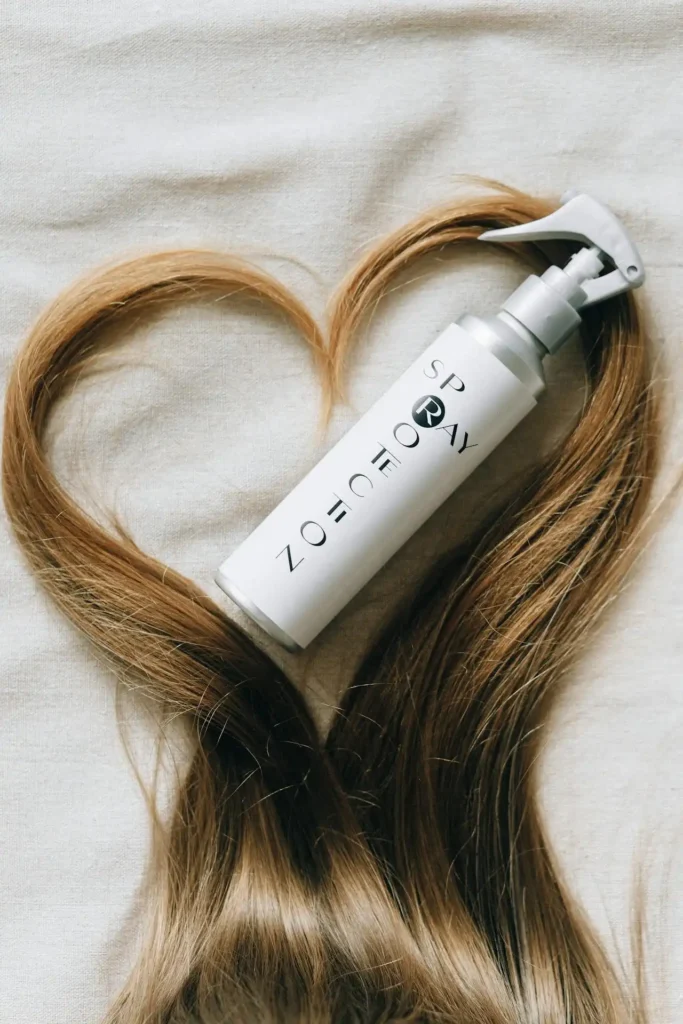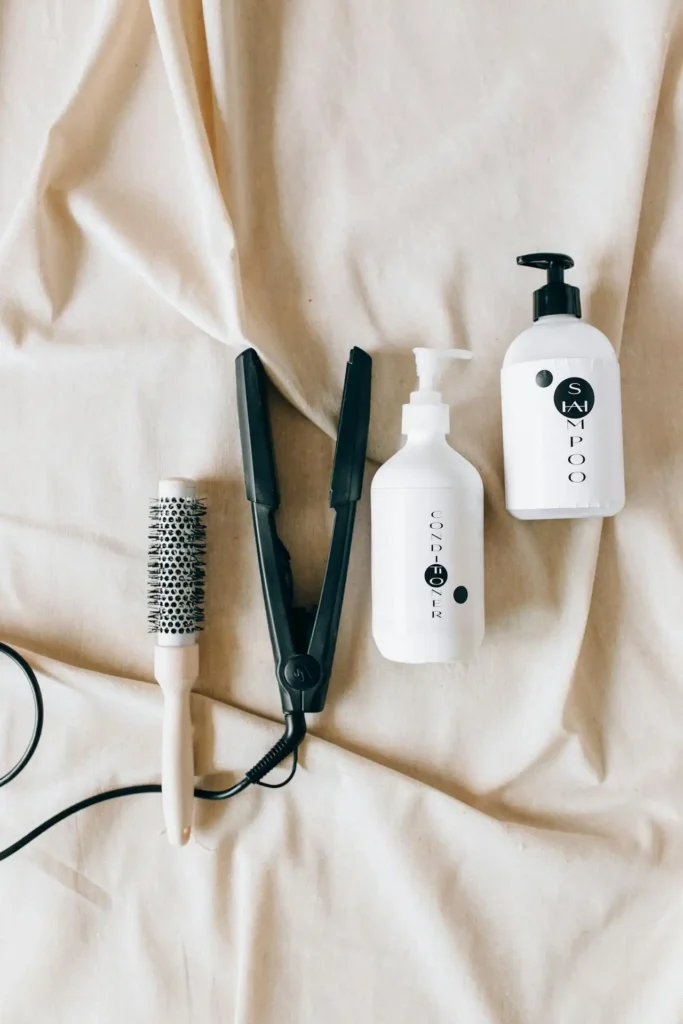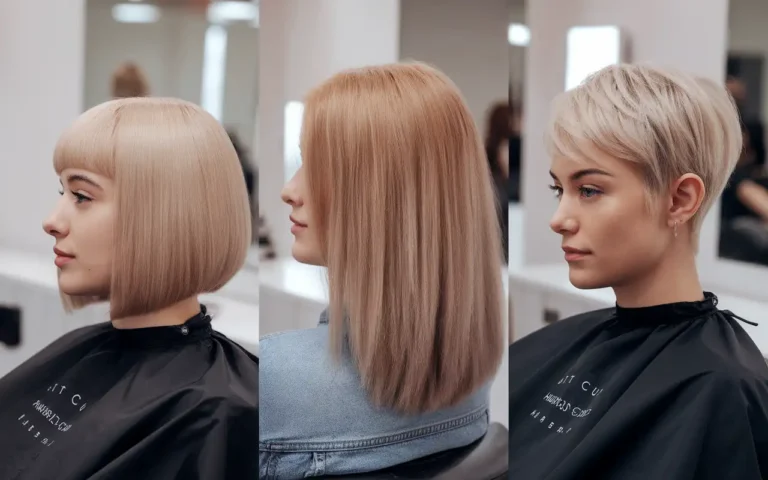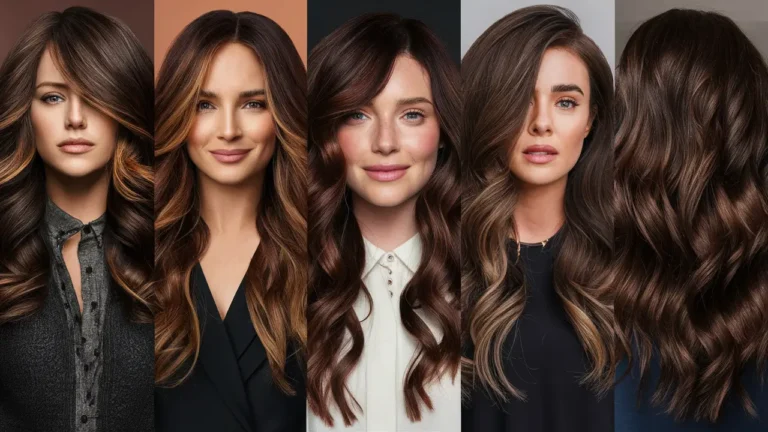The Right Way to Layer Hair Products for Maximum Shine
You’ve collected an impressive arsenal of hair products, each promising lustrous locks and salon-worthy results.
Yet somehow, your hair still lacks that mirror-like shine you see on magazine covers.
The secret isn’t buying more products—it’s learning the art of layering them correctly. Master this technique to unlock your hair’s full potential.
Start with Clean, Prepared Hair

Your product layering journey begins in the shower with the right foundation. Choose a clarifying shampoo once a week to remove product buildup that dulls your hair’s natural shine.
This deep-cleaning step ensures your subsequent products can penetrate properly rather than sitting on top of residue.
Follow with a moisturizing shampoo for your regular washes. Focus the lather on your scalp and roots, where oil production is highest.
Let the suds gently cleanse your mid-lengths and ends as you rinse—this prevents over-stripping delicate areas that need moisture most.
Conditioning comes next, but apply it strategically. Start from your ears down, avoiding your roots unless you have extremely dry hair.
Leave the conditioner on for at least three minutes to allow deep penetration. Rinse with cool water to seal the hair cuticles and lock in moisture.
Your hair’s condition after washing determines how well your styling products will perform.
Properly cleansed and conditioned hair provides the ideal canvas for layering products that enhance shine and manageability.
Master the Leave-In Treatment Layer
Leave-in treatments form the crucial first layer of your styling routine. Heat protectants deserve top priority if you plan to use any hot tools.
These products provide ongoing nourishment and protection while creating a smooth base for subsequent products. Apply them to damp hair immediately after towel-drying.
Spray or distribute them evenly from mid-lengths to ends, paying special attention to previously damaged areas.
This invisible shield prevents thermal damage that creates dullness and roughness. Protein treatments work wonders for chemically processed or damaged hair.
Use these weekly to fill in gaps in your hair’s structure, creating smoother surfaces that reflect light beautifully.
However, alternate with moisturizing treatments to maintain the perfect protein-moisture balance.
Leave-in conditioners add an extra layer of hydration and slip. Choose lightweight formulas for fine hair and richer creams for thick or coarse textures.
These products should absorb completely without leaving residue that could weigh down your hair or attract dirt.
Apply Serums and Oils with Precision
Hair serums and oils require precise application to maximize benefits without creating greasiness.
Start with tiny amounts—you can always add more, but removing excess product is nearly impossible once applied.
Silicone-based serums excel at creating instant shine and smoothness. Avoid your roots unless you have extremely dry or textured hair that needs extra smoothing.
Warm a small amount between your palms, then gently press and smooth through your hair’s mid-lengths and ends.
Natural oils like argon, jojoba, or coconut oil provide deep nourishment while adding lustrous shine.
Use these sparingly on damp hair, focusing on the most damaged areas. Fine hair benefits from lighter oils like jojoba, while thick hair can handle richer options like coconut oil.
Layer oils under serums for maximum impact. The oil penetrates deeper to nourish your hair shaft, while the serum creates a protective coating that seals in moisture and reflects light.
This combination delivers both immediate shine and long-term hair health.
The key to oil application lies in distribution. Rake your fingers through your hair after applying to ensure even coverage.
Uneven application creates patchy shine and can make your hair look greasy in some areas while leaving others dry.
Perfect Your Styling Product Sequence

The order of your styling products dramatically affects your final results.
Heavy products applied first can block lighter products from penetrating, while incorrect sequencing can cause products to pill or separate on your hair.
Volumizing mousses and root lifts go on first when working with damp hair. These products need direct contact with your hair shaft to create lift and body.
Apply them primarily to your roots and mid-lengths, avoiding your ends unless you want all-over volume.
Curl creams and wave enhancers follow next for textured hair types. Scrunch these products into damp hair using upward motions to encourage natural curl patterns.
The key is even distribution—work in sections to ensure every strand receives product coverage.
Smoothing creams and anti-frizz products come after curl enhancers but before final styling products.
These create a sleek base that helps other products glide on smoothly. Focus application on areas prone to frizz, typically around your hairline and crown.
Heat styling products require careful timing. Apply thermal protectants to damp hair, then add any heat-activated styling products just before using your tools.
This sequence ensures maximum protection while allowing styling products to activate properly with heat.
Layer According to Your Hair Type
Fine hair requires a different layering approach than thick, coarse hair. Understanding your hair’s unique needs prevents product overload while maximizing shine and manageability.
Fine hair benefits from lightweight, volumizing products applied sparingly.
Start with a root lift spray, add a tiny amount of serum to your ends, then finish with a light-hold hairspray.
Avoid heavy oils and thick creams that can weigh down delicate strands. Thick hair can handle more product and benefits from richer formulations.
Begin with a leave-in conditioner, add a smoothing serum or oil, then layer on your styling products. This hair type often needs extra moisture to achieve optimal shine.
Curly hair thrives on moisture-rich layering. Start with a leave-in conditioner, add a curl cream, then seal with a lightweight oil or serum.
The “LOC” method (leave-in, oil, cream) works well for many curl patterns, locking in hydration for defined, shiny curls. Color-treated hair needs extra protection and moisture.
Layer a color-safe leave-in treatment first, followed by UV protection, then your regular styling products. This approach preserves your color while maintaining shine and health.
Avoid Common Layering Mistakes
Product overload ranks as the most common mistake in hair product layering. Applying products to dirty hair sabotages your layering efforts.
More products don’t automatically mean better results—they often create buildup that dulls shine and weighs down your hair. Start with less and build up gradually.
Product buildup prevents new products from absorbing properly, creating a coating that looks dull and feels heavy. Regular clarifying treatments solve this problem.
Using incompatible products can cause separation, pilling, or reduced effectiveness. Always use thermal protection, even on low heat settings.
Water-based and oil-based products don’t always mix well, so test combinations on a small section first.
When in doubt, choose products from the same line that are formulated to work together.
Skipping heat protection when using styling tools damages your hair’s cuticle, creating rough surfaces that scatter light instead of reflecting it.
Applying products to soaking wet hair dilutes their effectiveness. Gently towel-dry or squeeze out excess water before layering products.
Your hair should be damp but not dripping for optimal product absorption.
Time Your Application for Best Results

Timing plays a crucial role in successful product layering. Allow each product layer to absorb before adding the next, typically waiting 30-60 seconds between applications.
This prevents products from mixing in unwanted ways. This timing ensures maximum penetration and effectiveness of nourishing ingredients.
Apply leave-in treatments to freshly washed, damp hair when your cuticles are still slightly open and receptive to moisture.
Styling products work best on hair that’s 70-80% dry. This moisture level allows for even distribution while providing enough dampness for products to spread smoothly.
Hair that’s too wet dilutes products, while completely dry hair resists product penetration.
Finishing products like shine sprays and light-hold hairsprays should be your final step. Consider your daily schedule when planning your routine.
These products create a protective layer that seals in your styling work while adding final touches of shine and hold.
If you’re rushing, focus on the most essential products: leave-in treatment, heat protection, and one styling product. Save elaborate layering routines for days when you have more time.
Create Shine-Boosting Product Combinations
Certain product combinations create synergistic effects that amplify shine beyond what individual products can achieve. Learning these power pairings elevates your hair game significantly.
Pair a volumizing mousse with a lightweight serum for fine hair that needs both body and shine.
Apply the mousse to damp roots, then smooth serum through your ends. This combination creates lift without sacrificing shine.
Combine a curl cream with a diffusing spray for enhanced curl definition and shine. Layer a hair oil under a UV protection spray for color-treated hair.
The cream provides moisture and hold, while the spray adds lightweight shine and reduces frizz during diffusing.
The oil nourishes and adds shine, while the UV spray preserves your color and prevents environmental damage that dulls hair.
Mix a few drops of facial oil into your regular hair serum for extra nourishment.
High-quality facial oils often contain superior ingredients that benefit hair health and shine. This trick works especially well for dry or damaged hair.
Use a clarifying shampoo followed by a deep conditioning mask once weekly, then style with minimal products.
This reset routine removes buildup and infuses moisture, allowing your hair’s natural shine to emerge with less product dependency.
Professional Techniques for Salon-Level Results
Professional stylists use specific techniques that enhance product layering effectiveness. These methods ensure even distribution and maximum impact from every product you apply.
The “prayer hands” method involves pressing products between your palms, then gently pressing and smoothing down your hair shaft.
This technique distributes products evenly while minimizing frizz and maintaining curl patterns.
Sectioning your hair during product application ensures thorough coverage. Divide your hair into 4-6 sections, applying products to each section individually.
This method works especially well for thick or long hair that’s difficult to coat evenly. The “rake and shake” method works well for wavy hair.
The “glazing” technique involves applying shine-enhancing products to the surface of styled hair.
Smooth a tiny amount of serum or oil over your finished style to add instant gloss without disturbing your hair’s shape.
Scrunching products into curly hair activates natural texture while encouraging curl formation.
Cup sections of hair in your palms and gently squeeze upward, allowing products to distribute naturally through your curl pattern.
Rake products through with your fingers, then shake out your hair to encourage natural movement and prevent product heaviness.
Maintain Your Layered Look Throughout the Week

Your product layering routine shouldn’t end after styling. Maintaining your hair’s shine and health between washes extends the life of your styling work and keeps your hair looking its best.
Refresh your hair on non-wash days with a light misting of leave-in conditioner or curl refresher. Focus on areas that tend to get flat or frizzy overnight, typically your crown and around your ears.
Sleep on silk or satin pillowcases to reduce friction that can disturb your styled hair and create frizz.
These smooth surfaces help maintain your hair’s cuticle smoothness and preserve shine while you sleep.
Use dry shampoo strategically to absorb excess oil without stripping away beneficial products.
Apply dry shampoo to your roots only, avoiding mid-lengths and ends where you want to preserve moisture and shine.
Protect your hair from environmental damage by wearing hats or scarves in harsh weather.
Wind, sun, and pollution can all contribute to dullness and damage that undermines your careful product layering efforts.
Touch up your ends with a tiny amount of serum or oil as needed throughout the week.
Ends tend to dry out faster than roots, so this targeted refreshing maintains overall shine and smoothness.
Conclusion
Master the art of layering hair products by understanding your hair’s unique needs and applying products in the correct sequence for maximum shine and health.







